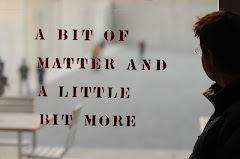Ekphrasis and the Other
W. J. T. MITCHELL
This article reproduced as part of
the Romantic Circles Electronic Edition of Shelley's "Medusa"
by kind permission of the University of Chicago Press.
"Ekphrasis and the Other" by W. J. T. Mitchell from PICTURE THEORY published by The University of Chicago Press, copyright 1994 by The University of Chicago. All rights reserved.
This material may be used and shared in accordance with the fair-use provisions of US copyright law, and it may be archived and redistributed in electronic form, provided that this entire notice, including copyright information, is carried and provided that the University of Chicago Press is notified and no fee is charged for access. Archiving, redistribution, or replication of this text on other terms, in any medium, requires both the consent of the author and the University of Chicago Press.
Adapted for hypertext by Melissa J. Sites.
Ekphrasis and the Other
Wednesday, November 22, 2006
"There are conventions with ekphrasis, as with other poetic modes. Over the past two years or so, I’ve put together a list of conventions that usually appear in an ekphrastic work. Not all of them are present at once. In fact, quite frequently only one or two are present at any given time; historically, however, these are the appeals, patterns, and/or traditions that an ekphrastic work usually adopts. Predominantly, these conventions come from either my or someone else’s research on male ekphrasis. Many of these would also be found in a woman’s ekphrastic work. Still, I believe that there are particular anxieties, considerations… even sympathies that underlie ekphrastic poems by women that further enrich this list of conventions. I’ll probably make a stab at what I think some of those things are early on, but I hope over the course of the next month or so that the poems that I’ll be introducing here will prove these female conventions to exist in more than just my head."
Conventions of Ekphrasis
Conventions of Ekphrasis
Ekphrasis: a literary text that attempts to evoke, describe, or reproduce the impact of a work of art, whether real or imaginary. While often neglecting to convey the details of the artwork's appearance, the ekphrasis can result in so vivid an evocation that readers at times think to have seen the work with their own eyes.
In Ekphrasis
In Ekphrasis
Subscribe to:
Comments (Atom)







